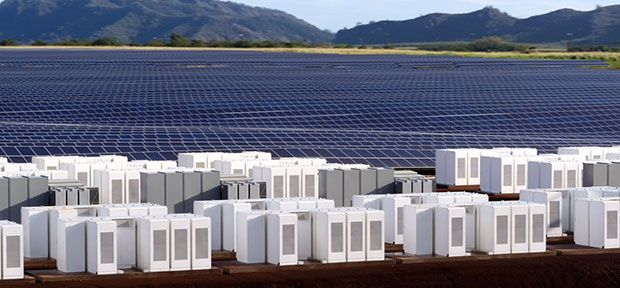Weekly Microgrid News — March 30, 2017
Tesla’s Newest Island Microgrid Project, Partnering With Tiny Hawaiian Utility to Store Solar on Kauai

A 33,000-member electric power cooperative on the island of Kauai in the Hawaiian archipelago has emerged as a leader in moving from fossil-based power to renewables. Earlier this month, Tesla Motors Inc., along with Kauai Island Utility Cooperative (KIUC), deployed one of the world’s largest arrays of lithium-ion battery packs on the Island.
Ten years ago, renewable energy was among the most expensive generating options available to remote places like Kauai. In fact, a 2012 report by the International Energy Agency’s Renewable Energy Technology Deployment group (a report co-authored by HOMER Energy‘s Peter Lilienthal, John Glassmire, and Ed Sanders) stated that with few exceptions, most of the world’s remote areas depended on oil for all of their electricity, heating and cooling, and transportation.
Today. remote communities like KIUC’s serve as a test bed for technologies like battery storage and strategies that focus on integrating renewable energy into the broader grid. Lessons learned from such remote areas can teach the world how to successfully deploy and integrate renewables and storage technologies.
Africans Living ‘Off-grid’ May Help Solve Continent’s Energy Crisis – Annan Panel
Rwanda and Ethiopia are among five countries leading the way in shifting to sustainable energy and solar power, and other nations should follow suit, said a panel led by former U.N. Secretary-General Kofi Annan. In a continent where some 620 million people live without power, the five countries are trying to boost their power supplies by cutting taxes on solar programs and introducing policies to attract companies that offer off-grid and mini-grid solutions. Other African governments should also focus on developing energy-efficient solutions on a smaller scale, rather than spending too much time and money on massive national power grids, the Africa Progress Panel (APP) said. The panel’s conclusions were published earlier this week. The week before, Annan made a case for microgrids during the APP’s opening remarks.
Latin America’s Bright Future for Off-grid Solutions
With approximately 5% of the region (35 to 40 million people) still without electricity, Latin America offers ample opportunities for off-grid solar solutions. Off-grid areas in Latin America are now benefiting from projects launched in the past few years to bring electricity to remote communities. For example, Mexico’s first 100% solar-powered school, which opened in Chiapas state last year. Latin America has not been a traditional focus of off-grid investments, but manufacturers are already selling to the market, and are a number of off-grid renewables companies are now working in the region.
More microgrid news highlights:
India’s Rural Electrification Situation
Blockchain Goes Solar (National Law Review)
How a High-tech Experiment in a Cotton Mill Town Might Change Your Life
Lead Acid Battery Group to Power US Solar Microgrid
Copper Is Essential to Modern, Sustainable Electric Grids
Look for HOMER Energy’s “Microgrid News Highlights” feature weekly at microgridnews.com
